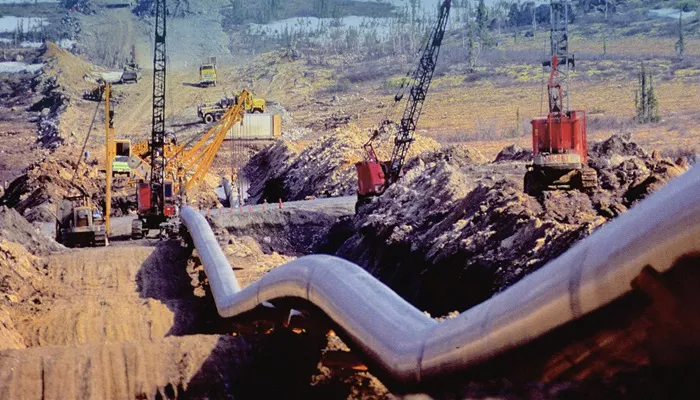Dormant for decades, Alaska’s ambitious liquefied natural gas (LNG) megaproject is stirring once again—fuelled by political backing and strategic courting of Asian energy buyers. But while the project’s future remains uncertain, its potential reawakening could pose a serious challenge to Canada’s own LNG aspirations.
Despite being discussed for more than 40 years, the Alaska LNG project has long struggled with financial and logistical hurdles. However, fresh momentum arrived with an executive order signed on Day One of Donald Trump’s presidency, reaffirming his administration’s commitment to resource development in the state. Since then, Alaska officials, including Governor Mike Dunleavy, have accelerated efforts to secure long-term LNG contracts in Asia.
Yet industry analysts remain cautious.
“If there’s a time to build it, now would probably be your best bet,” said Josephine Mills, a senior analyst with energy intelligence firm Enverus. “But then again, this has been talked about for the past 30, 40 years. It’s by no means a new project. There are still many hurdles to clear.”
An Enormous Undertaking
With a projected price tag of US$44 billion, the Alaska LNG project is monumental in scale. It would include a 1,300-kilometre pipeline transporting natural gas from the North Slope to a liquefaction facility in Nikiski, located just south of Anchorage. A carbon capture facility is also planned near the gas fields.
While a portion of the gas would serve local Alaskan communities, the vast majority is intended for export to Asia—directly targeting the same markets eyed by Canadian LNG developers.
“It would be beneficial to Canada to not have Alaska LNG be built,” Mills noted, emphasizing the competitive pressure it could place on emerging LNG ventures in British Columbia. Still, she added, even if the project advances, first shipments are unlikely before 2030.
In late March, the Alaska Gasline Development Corporation (AGDC), the state-run body overseeing the project, announced it had signed U.S.-based Glenfarne Group as the lead developer. Glenfarne will take a 75% ownership stake, with AGDC retaining the remaining 25%. A final investment decision is expected later this year.
Uncertainty in Trade Relations Adds Complexity
Some experts warn that ongoing trade tensions, particularly those stemming from tariffs introduced during the Trump administration, could weaken Alaska LNG’s prospects in international markets.
“It can be really costly to make these investments if you’re not sure that trade relationships will remain stable,” said Kent Fellows, an economist with the University of Calgary’s School of Public Policy.
“The United States had, until recently, a strong reputation for economic stability and support for free trade. That’s now in question.”
He added that in the LNG sector, timing is everything. Buyers often sign long-term contracts before export facilities are operational, so locking in demand ahead of time is critical. A successfully revived Alaska LNG could complicate those efforts for Canadian developers still navigating earlier stages of their projects.
Canada’s LNG Sector Maintains Optimism
Despite the looming threat from Alaska, Canadian industry leaders remain bullish about the global demand for LNG.
Mike Rose, CEO of Tourmaline Oil Corp.—Canada’s largest natural gas producer—believes there’s room for both projects.
“Worldwide demand could grow by up to 50 million mmBTU by 2035,” Rose said. “We won’t be oversupplying just because there might be a project that comes on in Alaska. We need all of them.”
Meanwhile, TC Energy CEO François Poirier has called for greater national coordination to strengthen Canada’s LNG industry. Speaking at a recent Canadian Club Toronto event, Poirier said Canada should adopt a “Team Canada” strategy to secure investment and support abroad.
“In Alaska, the U.S. administration is working to sign LNG memorandums of understanding with countries like Japan and South Korea,” he said. “Governor Dunleavy personally travelled to Asia and came back with an agreement from Taiwan.”
Poirier emphasized that regardless of who wins Canada’s federal election later this month, a unified front—including federal and provincial governments, Indigenous leaders, and private industry—is crucial.
“Collectively, we’ll have to travel to Asia and market ourselves,” he said. “We must underscore that Canada is back in business and is a good risk to take.”
As both Alaska and Canada compete for attention in the global LNG marketplace, the next few years could prove decisive for the future of North American natural gas exports.

